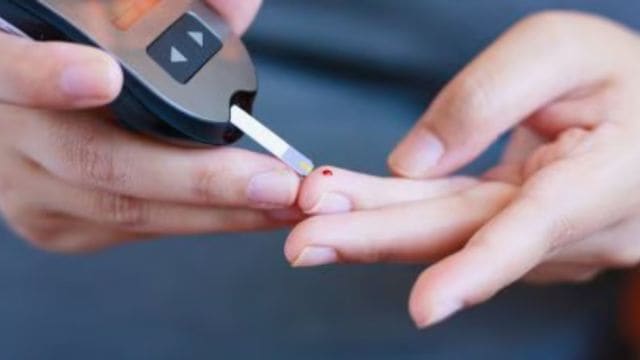Mumbai student develops Type 2 diabetes at 16: How an endocrinologist blunted his risk factors, turned the tide
During puberty, the body goes through hormonal changes that lead to temporary insulin resistance. Other risk factors can make it permanent. A World Diabetes Day special
 Parents can help by establishing consistent sleep and meal routines, restricting processed food intake and encouraging home-cooked, balanced meals. (File Photo)
Parents can help by establishing consistent sleep and meal routines, restricting processed food intake and encouraging home-cooked, balanced meals. (File Photo)Sixteen-year-old Rohan (name changed), a Class X student from Mumbai, didn’t think much of his constant fatigue and thirst. Between online classes, tuitions and late-night gaming sessions, he brushed off the frequent washroom breaks as normal. But his mother noticed changes in his physical appearance. He had gained nearly 12 kilos over two years despite never being an overweight child. He even developed dark, velvety patches on his neck. He mimicked all symptoms of diabetes in adults.
Blood tests confirmed what the family could hardly believe — Rohan had Type 2 diabetes, a condition once almost unheard of in children and teens.“Rohan’s daily routine looked strikingly similar to that of many urban Indian teenagers. Most days, he woke up late, skipped breakfast, rushed to school, attended extra classes online and spent his evenings on screens — gaming or scrolling social media. Physical activity was minimal and junk food was a comfort during study breaks. His diet, high in sugar-sweetened drinks and processed snacks, combined with long hours of sitting, created the perfect storm for insulin resistance — the body’s early warning system for diabetes,” says Dr David Chandy, Director of Endocrinology and Diabetology at Sir HN Reliance Foundation Hospital, Mumbai.
A family history didn’t help either. Both his parents were overweight, and his father had recently been diagnosed with diabetes.
What the diagnosis showed
At the endocrinology clinic, Rohan’s BMI was 32.7 kg/m², placing him in the obese category. His fasting blood sugar of 138 mg/dL and HbA1c (average blood sugar count of three months) count of 7.3% confirmed diabetes. He also had borderline high blood pressure and elevated triglycerides. Ultrasound suggested early fatty liver — a metabolic complication now seen in one in three obese adolescents.
“We are seeing more teenagers with Type 2 diabetes than ever before. It’s not just about weight — it’s about the combination of genes, lifestyle and environment. Indian children are particularly vulnerable because they develop insulin resistance even at lower levels of obesity,” says Dr Chandy.
What triggers Type 2 diabetes in teens
During puberty, the body goes through hormonal changes that lead to temporary insulin resistance. At this time risk factors like family history tend to upset the balance. A poor lifestyle just tops up risk factors.
“With fast food now easily available at the doorstep through delivery apps, children are consuming more high-calorie, ultra-processed meals rich in refined carbohydrates and unhealthy fats. Combined with inadequate sleep, this pattern raises insulin resistance and blood sugar levels, increasing the risk of obesity and early-onset diabetes,” explains Dr Chandy.
Fast food is digested quickly, leading to a sharp spike in blood sugar. This prompts the pancreas to release a large surge of insulin. Over time, this constant, high-level stimulation can cause cells to become less responsive to insulin or develop insulin resistance. The calorie buildup leads to weight gain. Excess body fat, especially around the abdomen, leads to insulin resistance by increasing inflammation, releasing free fatty acids that interfere with insulin signalling in the liver and muscle. A sedentary lifestyle perpetuates this cycle. “The rapid blood sugar spike and subsequent crash after eating fast food can lead to feelings of hunger soon after a meal, encouraging more frequent eating and a cycle of overconsumption,” says Dr Chandy.
Turning the Tide
Rohan’s treatment began with Metformin, the standard first-line medication for Type 2 diabetes. But the focus was largely on lifestyle modification. “Our goals were simple but consistent. We replaced sugary drinks with water or buttermilk. We introduced 45 minutes of physical activity daily — brisk walking, cycling, or swimming. We made Rohan cut back on processed food and added more vegetables and whole grains. We got the parents to readjust, encouraged family meals and limited screen time before bed,” says Dr Chandy. Rohan’s parents swapped their late-night dinners for balanced, home-cooked meals. They even changed their sleep cycle to match Rohan’s.
The results of a turnaround
Six months later, Rohan lost seven kilos, his HbA1c dropped to 6.2%, and his energy levels improved. “He feels lighter and more confident now,” his mother says. “The biggest change was not just the food but how we approached health as a family.
Parents can help by establishing consistent sleep and meal routines, restricting processed food intake and encouraging home-cooked, balanced meals. “Simple measures like shared family meals, reduced screen time and at least 8–10 hours of sleep daily can significantly protect a teen’s long-term metabolic and emotional health,” adds Dr Chandy. That and an early screening of high-risk students, who include those with a family history of diabetes, maternal history of gestational diabetes or signs of insulin resistance.




- 01
- 02
- 03
- 04
- 05



























